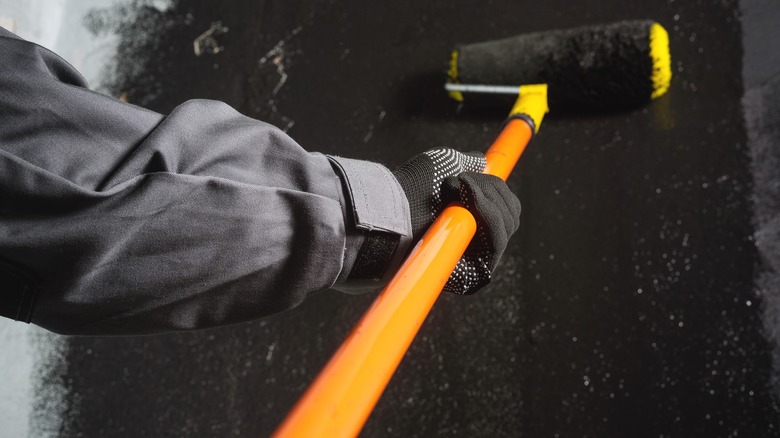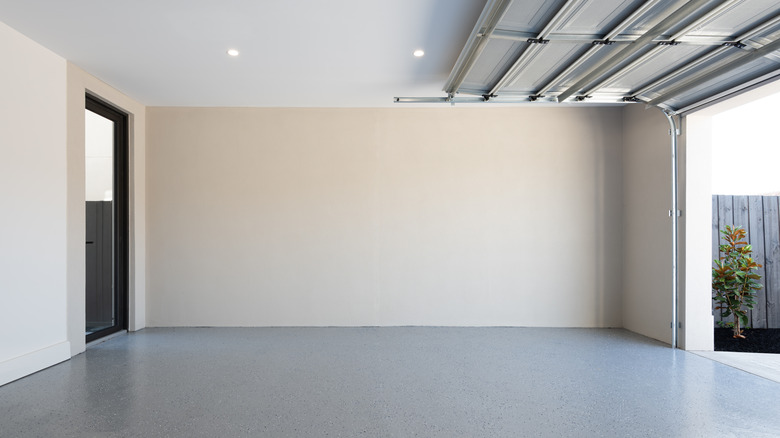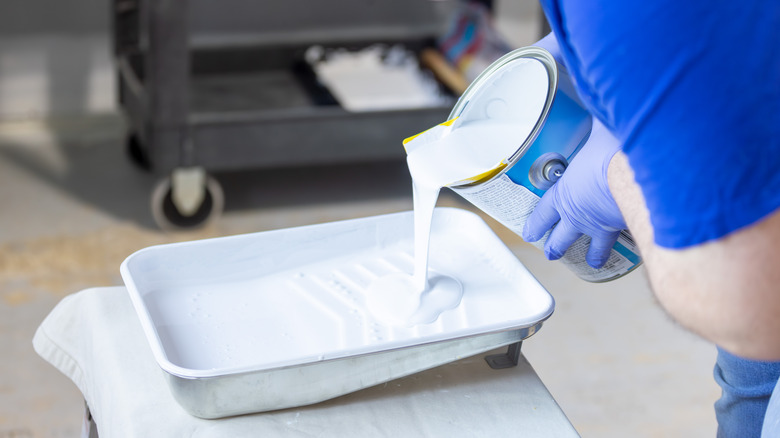Avoid Painting Your Garage Walls A Dark Color. Here's Why
If you've been taking steps to make your garage look amazing, you're well ahead of many homeowners. The garage is often left unfinished and is neglected more than other areas of the home. Consequently, it's often the last part of a home to receive a fresh paint job. Although many garage makeover ideas can improve storage and upgrade this utilitarian space's appearance, giving the walls a fresh coat of paint is a go-to option and is among the most impactful.
Despite this, many homeowners make poor decisions regarding the paint color and suffer from it. Painting your garage walls a dark color is a big mistake and can make your garage feel much smaller and more limited in space. Dark colors can make your garage seem cramped and cause you to feel claustrophobic and uncomfortable. When garage walls are dark gray, black, purple, or blue, it can also be difficult to see because dark paint absorbs a lot of light.
On top of this, a dark paint color will also change the temperature of the garage. While exterior paint colors affect heat more, dark interior paint colors can lead to a hotter garage as well. Dark colors such as black may also fade and their appearance can deteriorate pretty quickly.
Lighter colors for your garage
Dark walls can create a cozier, more intimate feeling in your garage. This can be useful, particularly if you hang out in your garage often and use it for more than just storing vehicles. However, choosing a simple color scheme with lighter neutral colors is preferable since this will help your garage feel more spacious and comfortable. Some of the best colors to consider when painting your garage include light gray, light blue, brown, and beige.
These lighter hues will make your garage feel more open and reflect light, helping ensure you can easily navigate the space and see anything you're storing. It's important to think about floor paint as well. Floor color can affect how spacious your garage seems and how bright it is. Consider using a lighter color such as beige, tan, or gray to make your garage feel open and inviting.
The garage door's color also matters. The primary thing to consider is how well the color you choose meshes with other exterior features of your home. For excellent curb appeal, ensure your garage door color works well with your home's exterior. Consider matching the front door or using a neutral color to achieve a smart, cohesive look.
Precautions to take when painting the garage
Before you start painting your garage, take a few preparatory steps. Remember to clean the walls first to get rid of dirt and grime, but avoid using abrasive chemicals. You'll also want to use primer when painting over painted walls so that the entire surface is uniform. It's best to paint your walls when it's warm outside or when the room is heated. Lower temperatures can cause issues with paint such as the paint thickening and running and can cause longer drying times.
Remember to be careful when painting to avoid spilling it. Use tarps and cloths to prevent spills on your garage floor and move belongings away from the walls. Ideally, add two or three coats of paint to the walls to ensure the entire area is fully covered and uniform, letting the paint dry completely between each coat. This will give you the best chance of success when painting your garage and can help ensure that your walls look their very best.


